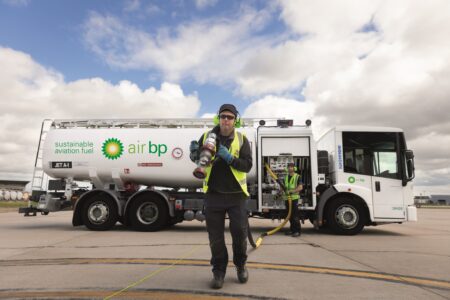Icarus Jet president Kevin Singh shares his views on urgent actions that the business aviation industry must deploy to level the playing field regarding the impact of aviation in the climate discussion.
If you don’t control the narrative, then others will. That’s a basic strategic communications concept that the business aviation industry is learning the hard way. We have allowed small groups of activists to take the mainstream media agenda to use business aviation as the punching bag of the climate crisis. To the already mounting pile of challenges like increased fees and taxes, ever-shrinking parking slots, and limited ground time allowance in many European airports, we now have this green snowball. The good news? It’s never too late to regain control.
Data and education are our main allies. Data from IATA shows that in Q2 2023, transportation and storage made up 8.4% of total GHG emissions, 74% of which pertain to road transportation. This leaves 26% of transportation’s GHG emissions as stemming from shipping and aviation, and it makes aviation’s share in the total comparable to that of construction in the chart. This context is crucial for the industry to highlight, as it provides a clearer picture of aviation’s relative impact.
Aviation emissions are a combination of CO2 (3.16 kg/kg fuel), H2O (1.25 kg/kg fuel), and nitrogen oxides (a few grams/kg of fuel, depending on the engine). The heating effect of the non-CO2 emissions is much more short-lived, but the aggregate climate impact could be comparable to that of CO2. Therefore, a nuanced understanding of these emissions and their effects is essential for informed discussions and policymaking.
Aviation’s share of total energy-related CO2 emissions in the world represented 2% in 2022, according to the International Energy Agency. Incidentally, data storage centers now also generate 2% of global CO2 emissions, including all devices that make use of data storage. This comparison underlines the need to consider all significant sources of emissions in the climate debate, rather than disproportionately targeting aviation.
For aviation’s decarbonization, the supply of such renewable fuel (Sustainable Aviation Fuels or SAF), must increase a thousand-fold by 2050, compared to today’s levels. This is an ambitious but necessary target. SAFs represent the most immediate and impactful solution currently available to reduce aviation’s carbon footprint. The industry must advocate for increased investment and innovation in SAF production to meet this demand.
Is hydrogen an option?
While there are many options in place to continue reducing carbon emissions in aviation, SAF seems to be ready to make an impact once the supply conundrum gets fixed – because the demand portion of the equation is there. A recent report stated that hydrogen-powered jets can cut emissions with a French startup company looking into this alternative. That’s great, but this looks like a mid to long-term solution, just like the plans of Swiss-based Sirius Aviation AG. Alongside Beyond they plan to power electric motors with hydrogen.
Hydrogen technology, while promising, faces significant hurdles in terms of infrastructure, safety, and scalability. The industry’s focus should therefore be dual: aggressively pursuing immediate reductions through SAF while investing in hydrogen and other long-term technologies.
Strategic communication and industry leadership
The business aviation industry must take proactive steps to shape the green narrative. This involves not just communicating the efforts and advancements being made but also actively engaging with stakeholders, including policymakers, environmental groups, and the public. Transparency about challenges and progress will build trust and demonstrate the industry’s commitment to sustainable practices.
In a nutshell, to regain control of the narrative, the business aviation sector needs a comprehensive strategy that includes data transparency by regularly publishing and highlighting data on emissions, progress in SAF adoption, and other sustainability initiatives.
Along the same lines, stakeholder engagement is paramount, and creating platforms for dialogue with environmental groups, policymakers, and the public to address concerns and demonstrate commitment to sustainable practices would be another step in the right direction like the recently created NBAA initiative called Climbing Fast.
Finally, innovation and investment will secure the long-term stability of this push, with greater investment in SAF, hydrogen technologies, and other innovative solutions to reduce emissions – followed by public education campaigns to educate the public on the steps the industry is taking toward sustainability and the complexities involved in aviation emissions.
In essence, by strategically controlling the narrative, the business aviation industry can ensure a more balanced and informed public discourse, ultimately advancing a more supportive environment for sustainable aviation advancements. The time to act is now, not only to protect the industry’s reputation but also to genuinely contribute to the global effort against climate change. It’s never too late





